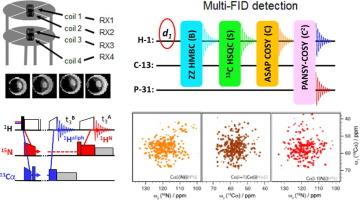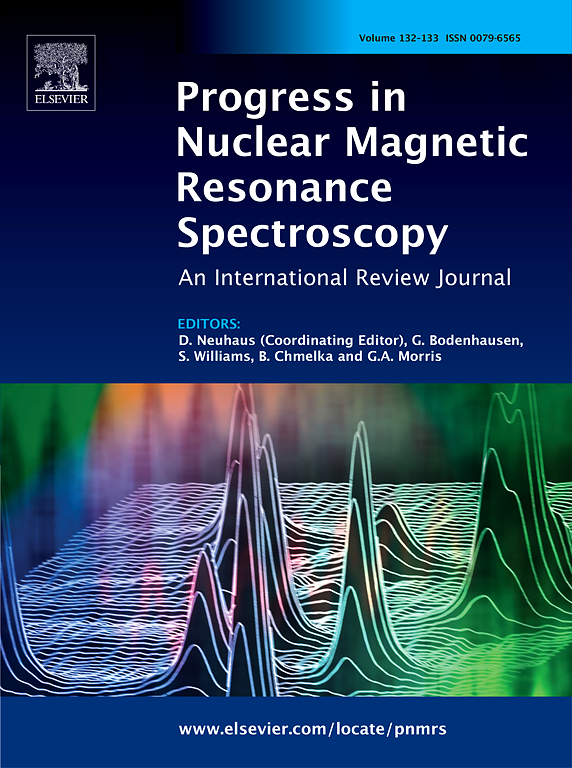Multiplexing experiments in NMR and multi-nuclear MRI
Abstract
Multiplexing NMR experiments by direct detection of multiple free induction decays (FIDs) in a single experiment offers a dramatic increase in the spectral information content and often yields significant improvement in sensitivity per unit time. Experiments with multi-FID detection have been designed with both homonuclear and multinuclear acquisition, and the advent of multiple receivers on commercial spectrometers opens up new possibilities for recording spectra from different nuclear species in parallel. Here we provide an extensive overview of such techniques, designed for applications in liquid- and solid-state NMR as well as in hyperpolarized samples. A brief overview of multinuclear MRI is also provided, to stimulate cross fertilization of ideas between the two areas of research (NMR and MRI). It is shown how such techniques enable the design of experiments that allow structure elucidation of small molecules from a single measurement. Likewise, in biomolecular NMR experiments multi-FID detection allows complete resonance assignment in proteins. Probes with multiple RF microcoils routed to multiple NMR receivers provide an alternative way of increasing the throughput of modern NMR systems, effectively reducing the cost of NMR analysis and increasing the information content at the same time. Solid-state NMR experiments have also benefited immensely from both parallel and sequential multi-FID detection in a variety of multi-dimensional pulse schemes. We are confident that multi-FID detection will become an essential component of future NMR methodologies, effectively increasing the sensitivity and information content of NMR measurements.


 求助内容:
求助内容: 应助结果提醒方式:
应助结果提醒方式:


